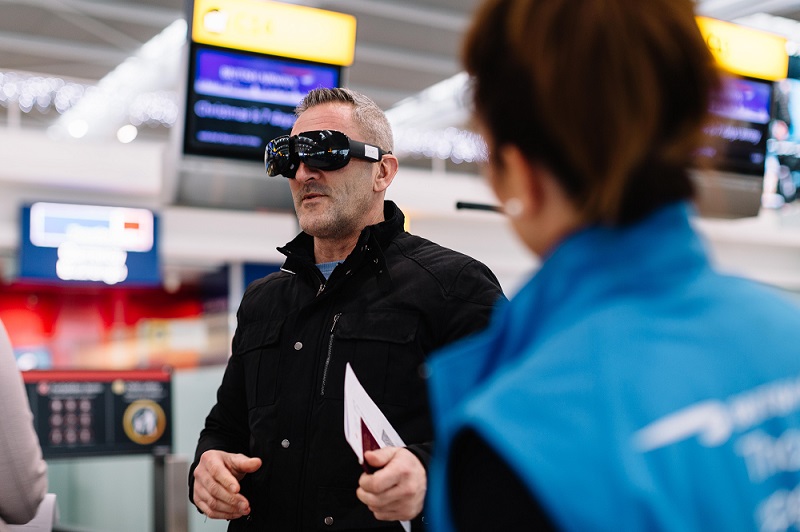
British Airways has deployed a new tool to sell customers on the pointy end of its aircraft — or at least make them even more envious.
The airline is trialing virtual technology reality at check-in desks at its London Heathrow Terminal 5 home base.
It allows customers to take a 360-degree tour of its Club World cabin that includes the additional space of its lie-flat seat, the up-market bedding, and restaurant-style dining.
It is the first UK airline to use the technology from tech start-up SkyLights and hopes it will entice passengers to upgrade.
The airline’s head of customer service at Heathrow, Tom Stevens, said the feedback from customers had been “incredibly positive”.
“We are always looking at new and innovative ways to engage with our customers and virtual reality is the latest way we are using a rapidly evolving area of technology to further improve the airport experience,’’’ he said.
Airlines and airports are increasingly looking at virtual reality and augmented reality as a useful tool for training, productivity or passenger experience.
Lufthansa is another airline that has used VR to sell upgrades by building a model of their premium experience and Qantas developed a virtual reality app that shows off Australian scenery.
Air France has tested virtual reality entertainment for premium passengers and was this year joined by Alaska Airlines which offered virtual reality headsets to first class passengers on two routes as part of a trial of VR in-flight entertainment programming.
Also using SkyLights technology, Alaska offered two films — Ready Player One and Ferdinand — as part of the trial in immersive 3D.
Air New Zealand has trialed augmented reality for cabin crew, equipping them Microsoft HoloLens goggles that could provide information such as a passengers’ destination, allergies and when they got their last beverage. It also talked about facial recognition software able to indicate the mood of a passenger.
The Kiwis are also working with MagicLeapOne on a “multiplayer spatial computer gaming experience” that uses the technology introduces players to a “magical” New Zealand complete with whales, Hobbits, and bungy jumping.
On the more serious side of the industry, aircraft manufacturers are developing virtual reality training tools that place trainee pilots inside a virtual cockpit while augmented reality is seen as a valuable aid to maintenance.























